Seen from above, it would be shaped like a question mark, the wake of the Little Dipper as I left the Bayfield harbor at 4am - the “dot” as I jumped into the boat at the slip, the straight line as I aimed up the North Channel without much of a destination in mind yet, the sudden swooping half-circle as I turned back towards the marina 180 degrees from the course I had been on. A question mark. The question? What did I see? Answer, the moon setting behind me tangled in the sailboat masts of Bayfield.
From the first humans who turned their faces toward the pale light of the moon, we have been enchanted and mesmerized by our closest celestial neighbor. Small by astronomical standards - just 2,160 miles in diameter (some 50 moons would fit inside the sphere of the earth), it is still larger than the moons of many other planets. It is not just its size that is impressive, but its closeness to us. The moon’s oblong orbit keeps it an average of 240,000 miles from the earth (a stone’s throw compared to the 93 million mile proximity of the sun and the almost unfathomable distance of even the nearest stars).
On clear nights, it seem as though you could reach out and pluck the moon from the sky like night-ripened fruit. Many babies are said to reach for the moon from their cribs. Indeed it is the stuff of nursery rhymes and imaginative walks “when the moon is full.” Millions of children fall to sleep to the whispered words of “Goodnight Moon.” Even as we get older, it plays a part in our cosmos of consciousness. It was Carl Sandburg’s poem “River Moons” with its “sky moon of fire” and “river moon of water” that first inspired my own interest in nature writing: “I know now it takes many, many years to write a river, a twist of water asking a question.” More than a simple light in the sky, the moon is, for many of us, our first recognition that there is something out there beyond the confines of the earth, something more outside of the safe, blue mantle of our sky.
Even more than that, it is the moon’s regular cadence through the heavens — 29 days, 12 hours, 44 minutes and three seconds between one full moon and the next — that enthralls us, a comforting constant, a visual drumbeat that was the clockwork of some of the earliest known calendars. Unlike stars which change only seasonally appearing constant night-to-night, the phases of the moon seem almost mercurial, a kind of dance of silver veils enticing us every month from its stage in the sky above.
The sight of the moon ripe in the sky stirs a constellation of emotions, as if we never have quite known what to make of it.
Galileo Galilei, the first to inspect the moon with a telescope which he invented in 1609, called the magnified moon “a most beautiful and delightful sight to behold.” One Apollo astronaut who had an even closer view of it had a very different take, calling the lunar surface “a dark, unappetizing-looking place, like a sand pile my kids have been playing in.”
Still, something about the moon touches the romantic side in many of us. That same lifeless rock becomes “Queen-Moon” to the poet Sylvia Plath and John Milton’s “resplendent globe.” It has become a symbol for everything from love and renewal to madness, werewolves, insanity, and fear.
Much more than just a rock in the sky, it is the pull of the moon that stirs the tides, sets the cadence for the life cycles of countless sea creatures, acts as a beacon for migrating birds. Some prey species like rodents and deer, are more active under the light of the moon foiling predators that are more successful under the cloak of the new moon darkness.
And if the moon can stir the oceans, why not the blood of humans? We are, after all, some 60 percent water ourselves, each one of us a living, walking ocean. Perhaps there are tides within our blood that create an ebb and flow of emotions and self-control. Shakespeare claimed the moon “makes men mad” and Charles Hyde of Jekyll and Hyde fame, claimed that his crimes were the result of moon-induced insanity. If the wilderness is more wild under the full moon, why not us?
Science may never fully prove the influence of the moon, on wilderness or humans. It is difficult to quantify something as wispy as moonbeams and we live in an age when something must be pinned down in weights and measurements before some will admit to its existence. Not that some haven’t tried. Alchemists once set out to distill moonlight, swirling the light in huge silver bowls but the mystery of the moon and its effect will not be condensed to anything as simple as chemical compounds or mathematical equations no matter how silvery the bowl. The shiver we feel at the sight of the moon rolling over a wild horizon is tied up in other, less objective things: in sounds half-heard on a windless night, in the brush of whiskers in tight places, and in what it is to be human in a world where some things cannot can’t be explained by the soulless calculations of science alone.
In my darkness-cloaked excursions aboard the Little Dipper, the moon is often a kind of night light bathing the lake in light the color of rubbed silver. Its glow is a companion that rides just over my shoulder as I nose out of the Bayfield harbor and set off into the islands, the silver-coined water flashing in light trails all around me. I come around the tip of an island to see it caught in the branches of the white pines, balancing off the edge of rock outcroppings, and reflecting in the lake itself if the water is calm enough. The moon, down on one knee, admiring itself in the mirror of still waters.
At moments like that it is not so much about statistics — the 841 pounds of moon rocks brought back by Apollo astronauts, the -273 degree “nights” on the surface of the moon without the quilt of any appreciable atmosphere. I am a romantic. I see the world not in numbers but in beauty and on moonlit trips among the islands on the Little Dipper I steer a course, not by the nautical charts, but by the light of the moon dancing on the water and glimmering somewhere deep in the stilled waters within.
— (all photography by Jeff Rennicke)
If you are a paid subscriber to the Little Dipper, thank you. If you are a free subscriber checking it out, I hope you enjoy what you see here and will join us on the journey by clicking below.
And, as always, send me a note to let me know what you think.








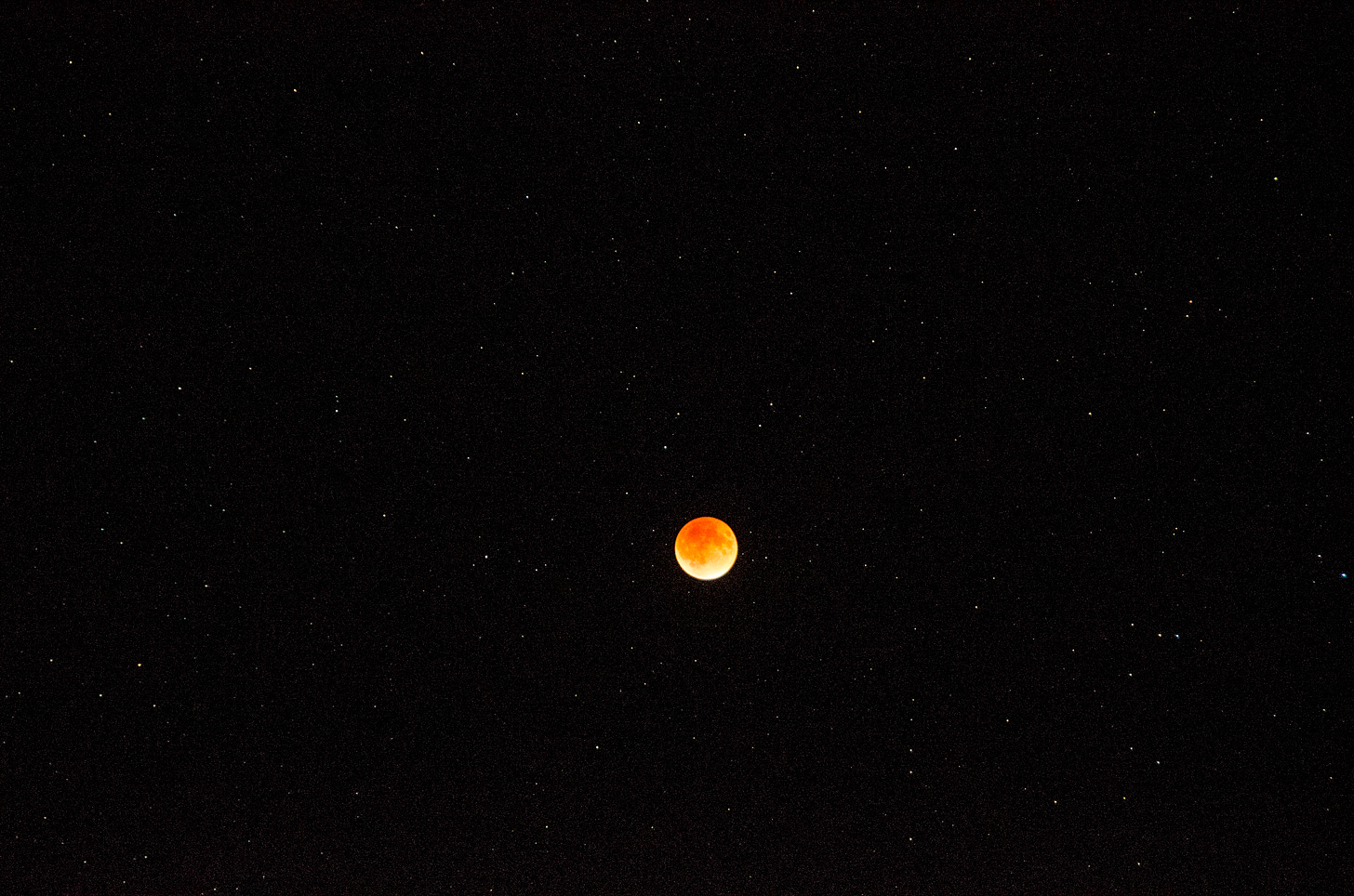
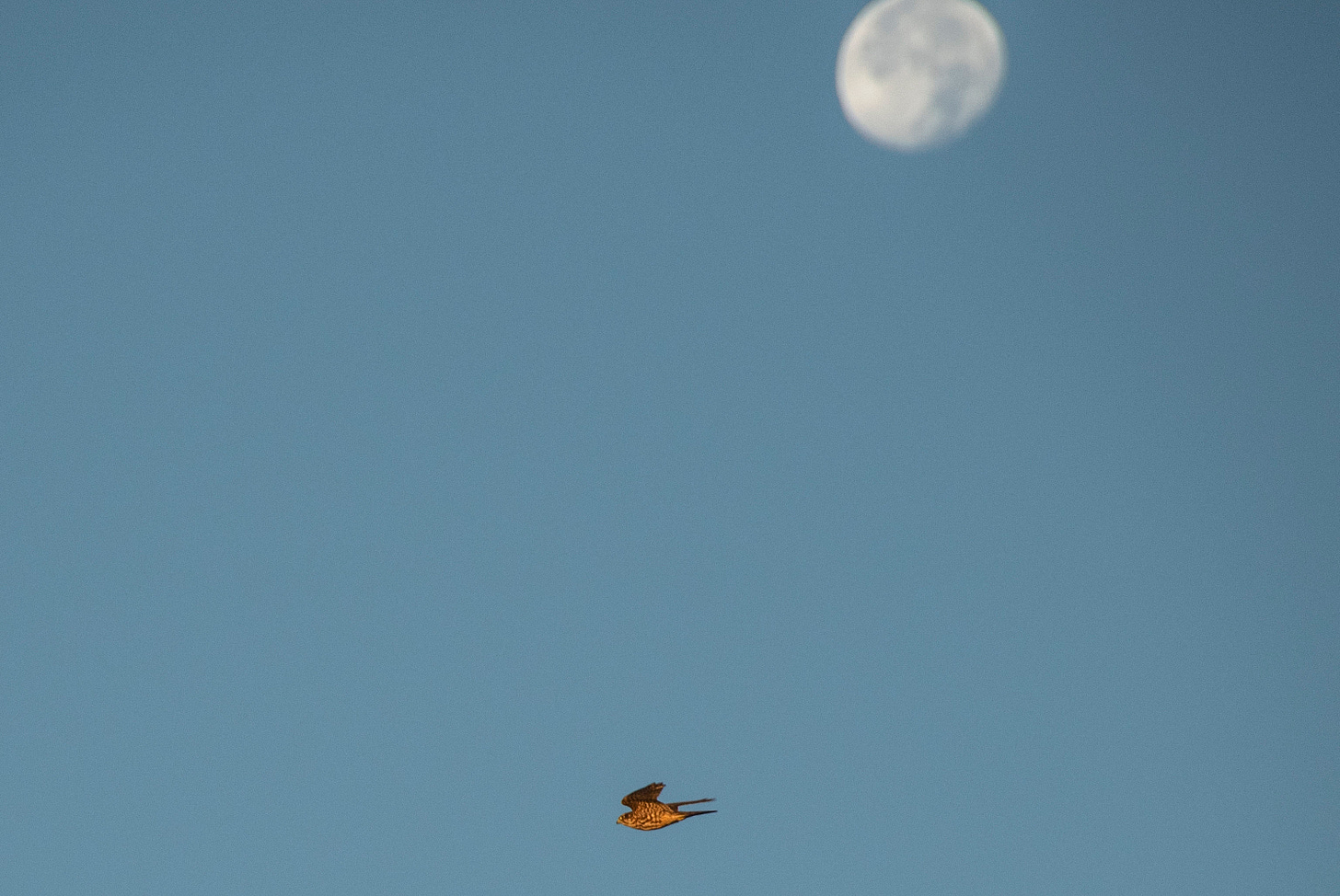
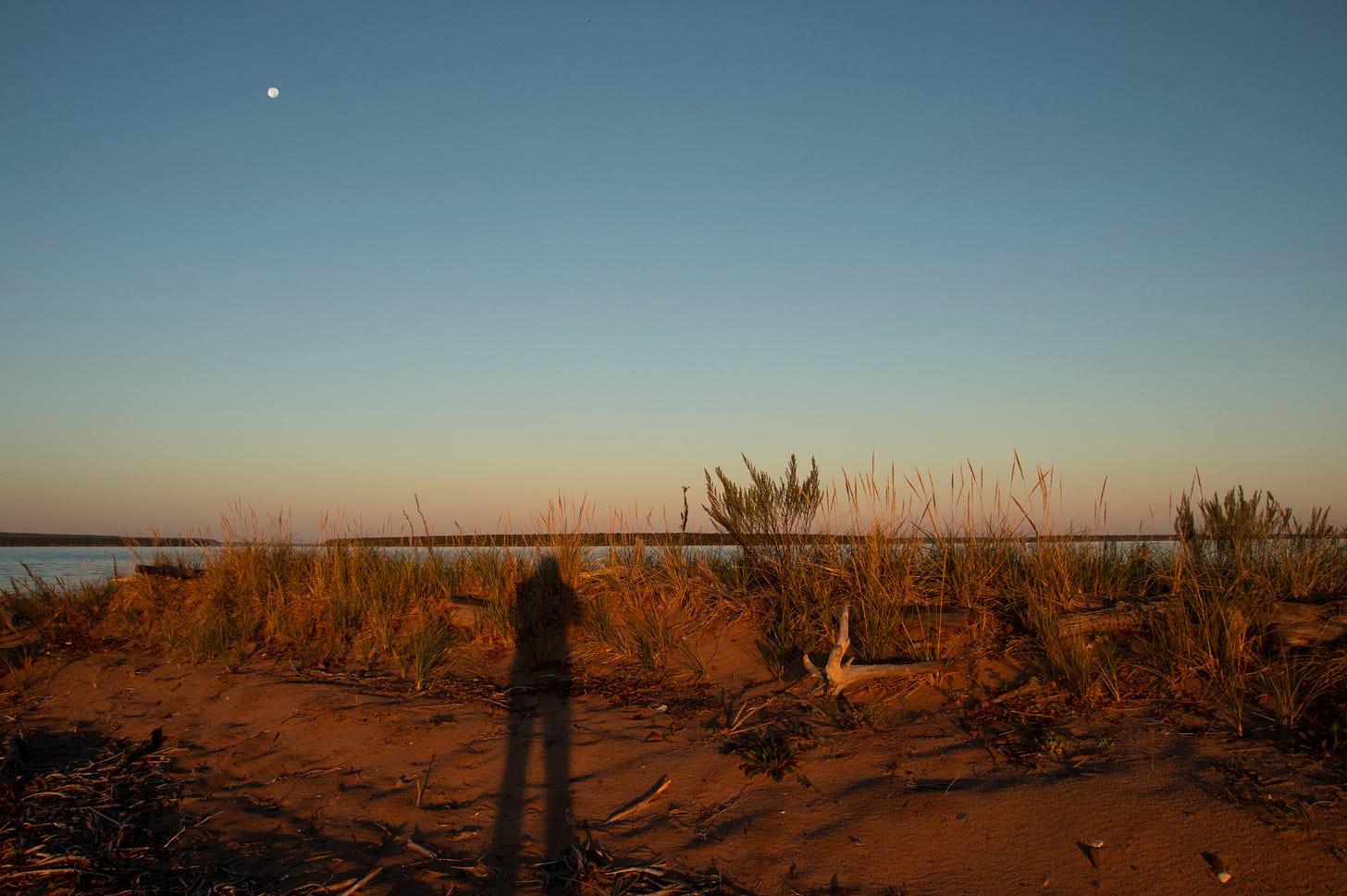
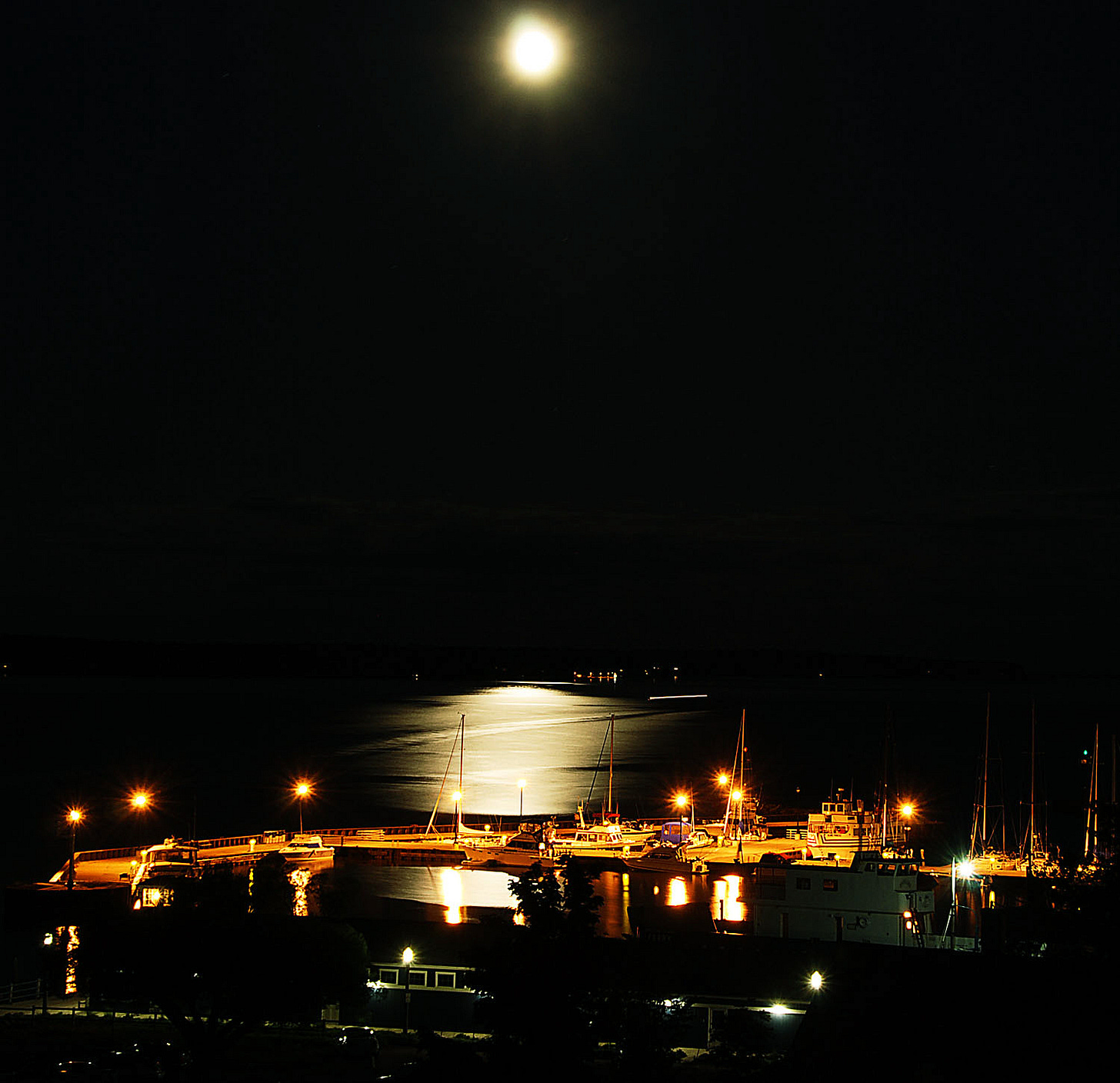

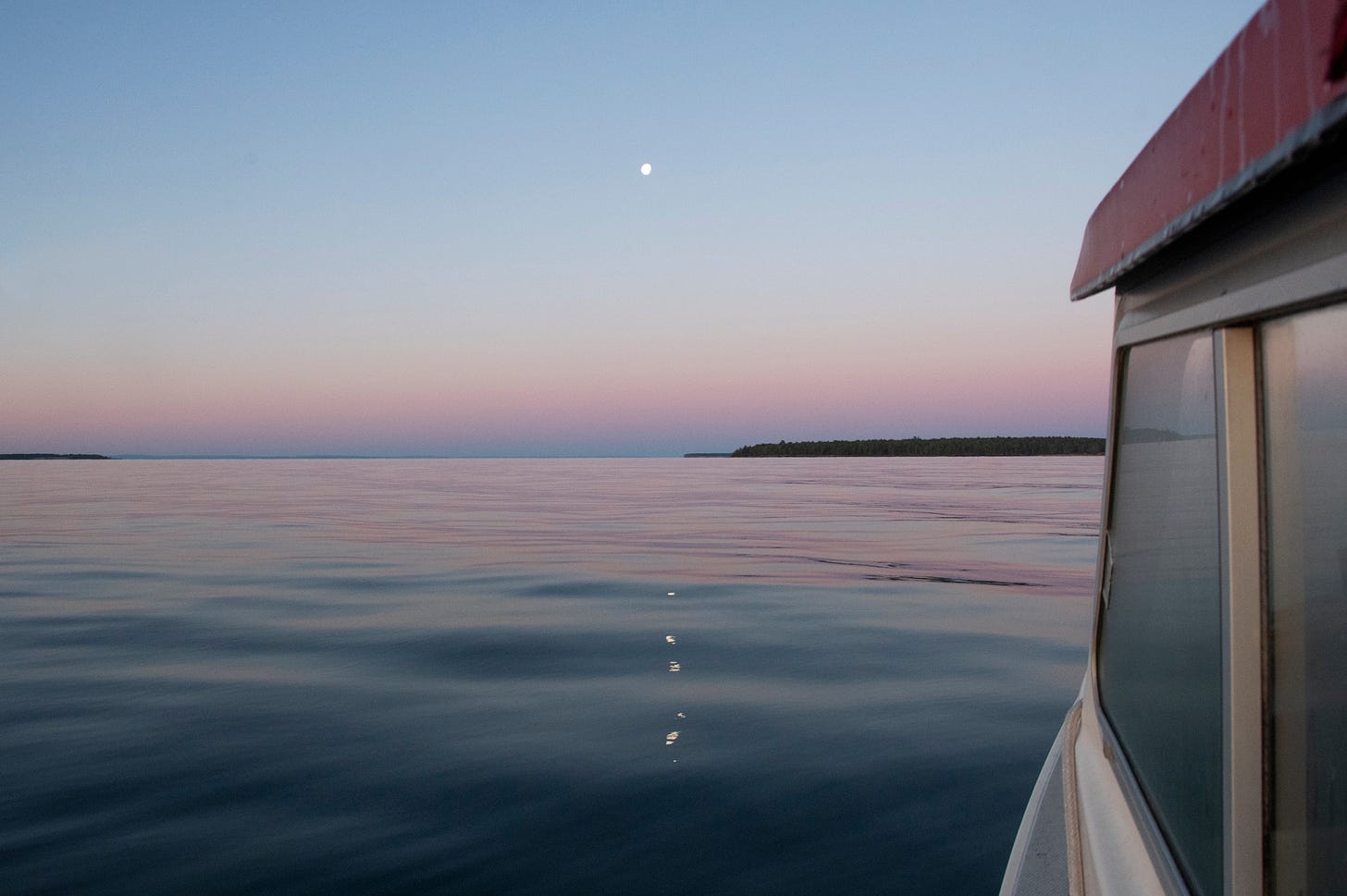
just beautiful, jeff! thank you for this. mmmmmm, the queen of the night. i love your references to childhood and our connection to her as humans -- the moon moving our blood, our internal waters, the cycle of her, just like that of a woman. ~28 days. as a woman, my blood feels moved and guided by her. the more i connect with her, the more empowered and grounded i feel. i loved hearing a man's sensitive voice in reference to the moon. good stuff. love your writing, so intimate and informative. big aloha from big island
These photos 😍